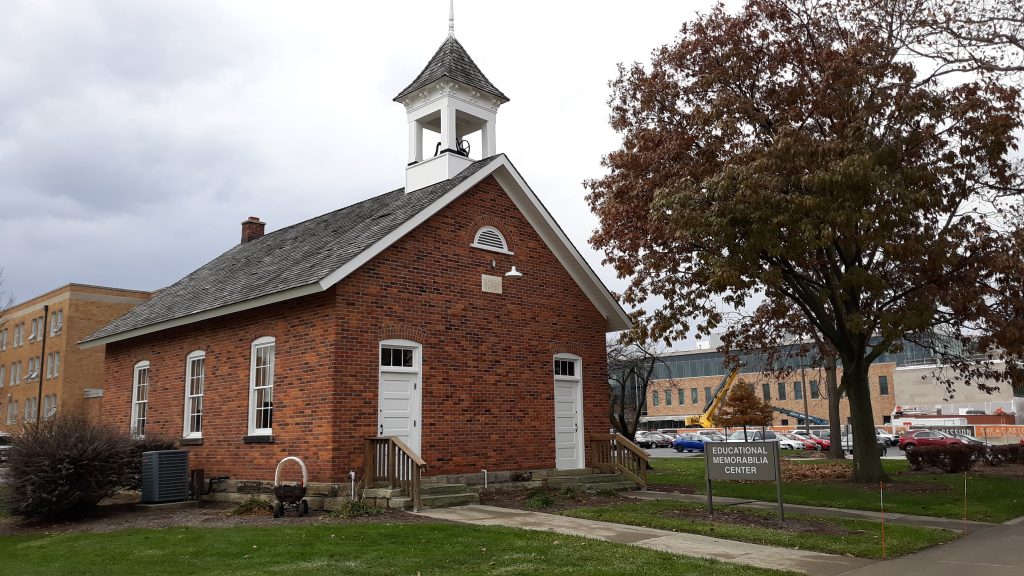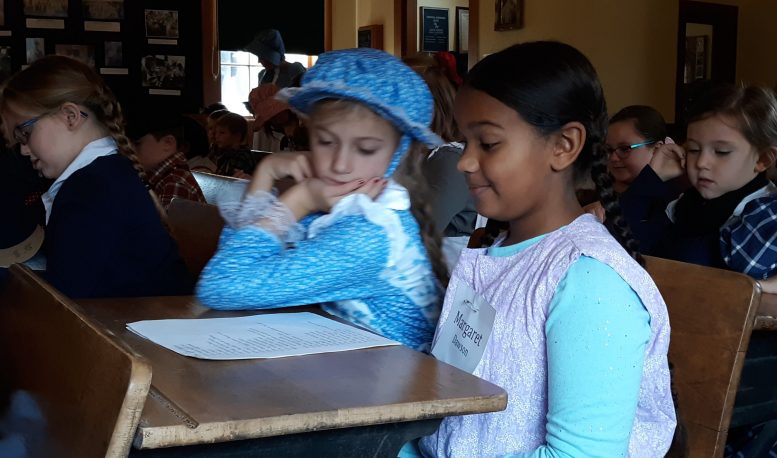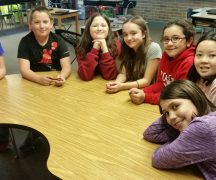By JAN LARSON McLAUGHLIN
BG Independent News
For the girls in their bonnets and the boys in their suspenders, there was no slouching in seats and no mumbling of words.
This was far from a typical school day for some students Crim Elementary School. Carrying their lunches in metal buckets, the children walked to the one-room school on the campus of Bowling Green State University last week.
They sat with girls on one side of the room, and boys on the other – with a wood-fired stove in the middle.
As part of the social studies curriculum for second graders at Crim Elementary School, each year the students spend a day at the one-room schoolhouse on the campus of Bowling Green State University.
“They have been excited about this,” second grade teacher September Killy said.
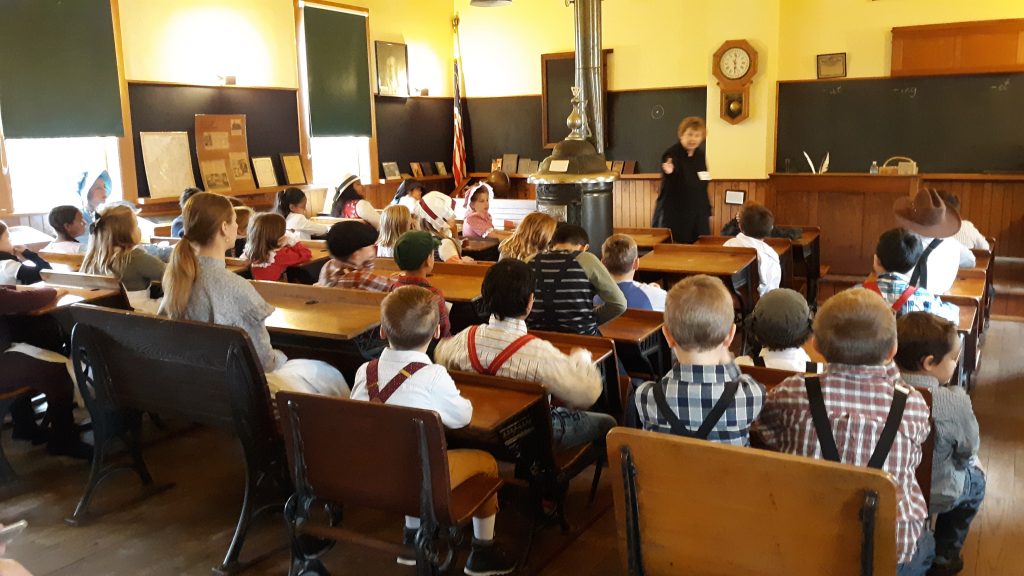
The students wore clothing that their predecessors might have worn in the 1890s – with plenty of knickers on the boys and long skirts on the girls. And they adopted names that may have been more common for the day. Some of the children used the names of their grandparents, like Ethel on the girls side and Orman on the boys side of the room.
The class was led by retired Bowling Green City School teacher Amy Rahmel, who didn’t tolerate misbehavior.
When called upon, the students stood up at their desks and responded with “present mam.” Rahmel warned that the dunce hat at the front of the room would be used if necessary, and that some particularly ornery boys may be made to don a bonnet.
Those who talk when not called upon were at risk of missing recess so they could write “I will not talk in class,” repeatedly on the chalkboard.
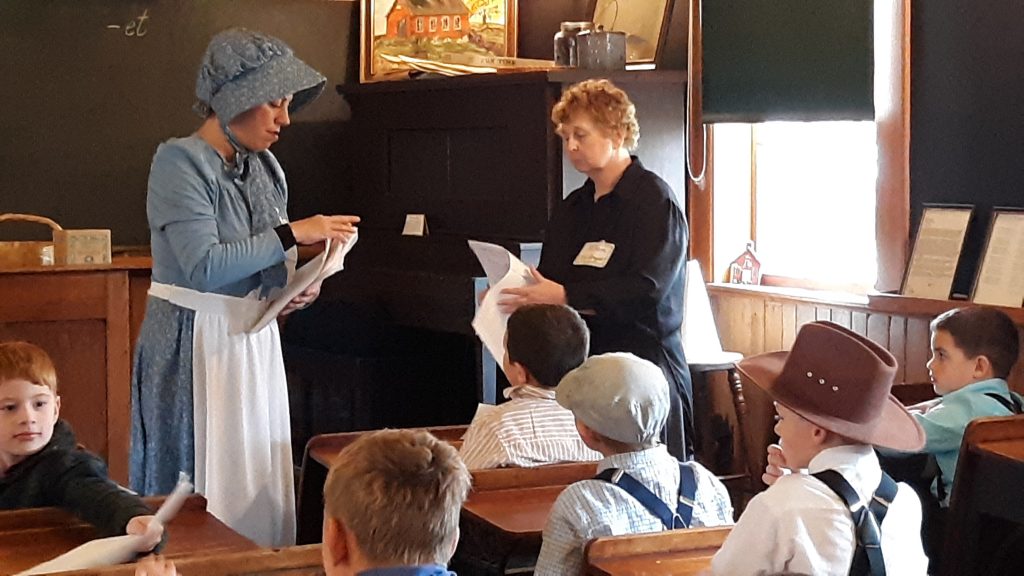
The school took the students back in time, with ink containers on their desks, old McGuffey Readers, and a U.S. flag with just 38 stars.
The students began their school day by first telling their teacher how they helped their parents before coming to school. The second graders played along, listing their morning chores as making butter, collecting eggs, milking cows and bringing in firewood.
Students started their lessons by citing the Pledge of Allegiance, singing “America the Beautiful” and reciting the Golden Rule.
Students were assigned chores in the classroom – like cleaning up after lunch, erasing chalkboards, and the dreaded cleaning of the outhouse. Rahmel advised that the outhouse may need more supplies – in this case, corn cobs.
“You do know what corn cobs are for, don’t you?” she asked.
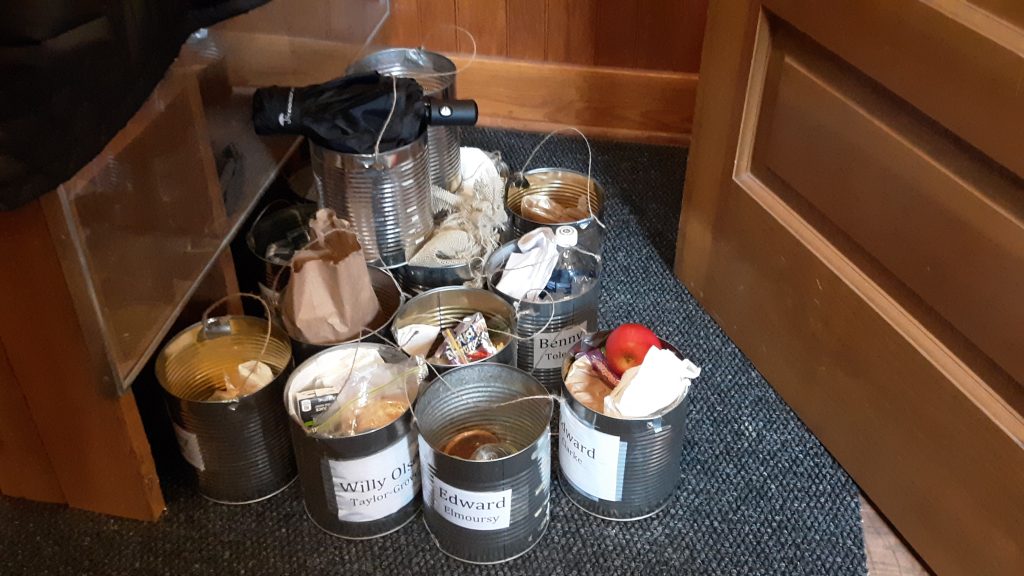
The children brought lunches unlike those they normally pack for school. There were apples, cider, bacon, eggs, and pears.
“We try to make the experience as real as possible,” Killy said. “For four days they are living a life in the past.”
The lessons start long before the walk to the one-room school. In their classrooms at Crim, the students first worked on penmanship, elocution, history of the time, and how technology has changed lives, according to second grade teacher Stacey Higgins. The school day concluded with a spelling bee.
The “Pioneer Days” at Crim allowed teachers and students to collaborate on hands-on activities with retired teacher Paul Munson and community volunteers.
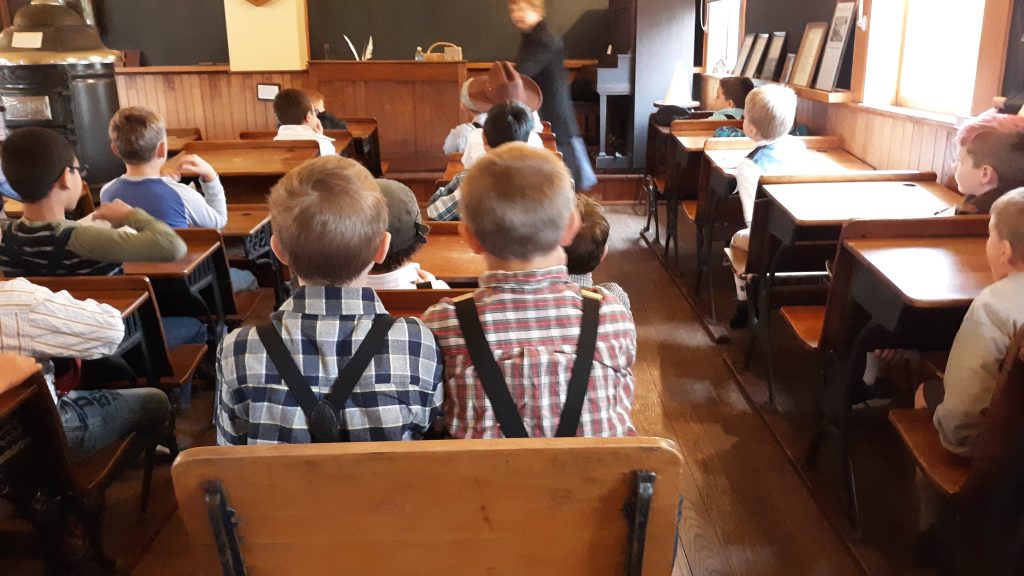
The one-room schoolhouse at BGSU was built in 1876 near Norwalk. It was used as a school until 1938, when students from the area began traveling by bus to Norwalk for classes.
In 1975, the schoolhouse was donated to BGSU by the Linder family to be used as a museum. The school was dismantled, brick by brick, and brought to the campus where it was reconstructed.
